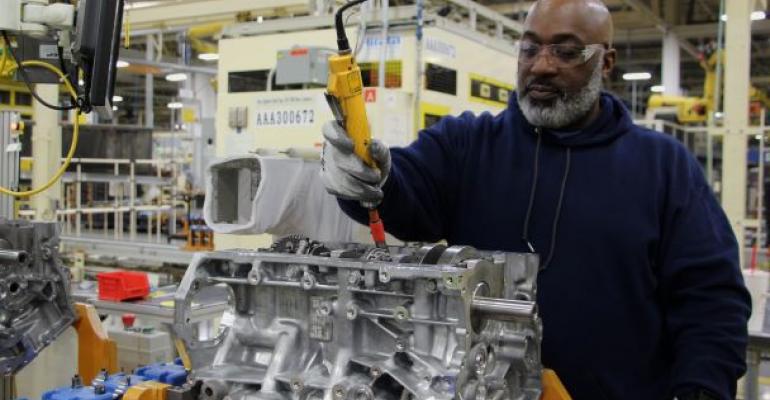The COVID-19 pandemic has made one thing clear: Not every manufacturer is going to come out of this crisis intact. If your business went into 2020 in an already weakened state, it’s going to show on the backside.
Now is the time to step back and talk about what the business is going to look like when operations resume. One of the most critical factors of a company’s long-term outlook is the response of leadership, and this situation is going to challenge leaders now more than ever.
Those who step up, maintain their composure, continue to communicate with their team and look at every aspect of the business are the ones who will be best positioned to bring their companies back from a very difficult situation. The ones who panic, don’t engage with their team and don’t ask for help might not make it out.
When it comes to automotive, the shutdown of OEM assembly plants has had a pronounced ripple effect on the rest of the industry, with thousands of suppliers and sub-suppliers being directly impacted. Looking forward, with everyone planning to relaunch at roughly the same time, there will be added strain placed on the global supply chain.
Ramping back up certainly will be a major challenge for the entire industry. There will be a slow restarting of operations, first for the plants and then for suppliers, with the plants that support the most profitable vehicles being the first to come back online.
In North America, most plants will be opening in May with limited or staggered shifts and other safety precautions in place. As the supply chain ramps up the OEMs will gradually increase volumes. They will draw on their firsthand experiences from China, South Korea and other locations that already have resumed operations to inform decisions in the North American market.
While all of this ultimately is a step in the right direction, the fact is that the industry is still facing serious headwinds as restrictions on public life remain in effect and will continue to be in place for some time.
For production shops, there will be some bounce back but not a full return to the 17 million vehicle run-rate. On the tooling side, shops will build out what they currently have, and then quotes will be limited as OEMs pick and choose which programs to pursue in the near future. From a business volume standpoint, tool suppliers will see slow quote activity in the third and fourth quarters this year, and possibly the first quarter of next year, as companies rebuild profits and prioritize which products to launch for tools.
On the whole, the economic impact of the pandemic is going to be felt most likely through December, and we will start to see a rebound in manufacturing in the first quarter of 2021.
There are certain practices that businesses need to be adopting to help them prepare for the next time a crisis comes about. Chief among them is embracing technology and automation like never before. Businesses must find avenues to run their operations with technology at the forefront.
Additionally, businesses will need to have tighter control when it comes to cash management, including paying down debt more rapidly, as well as implementing practices to address workforce readiness.
There’s no question the industry will undergo some significant changes as a result of this pandemic. One of the biggest shifts will be around the level of dependence on China when it comes to production and tooling.
On the one hand, there’s the potential for the industry to be less reliant on China because of what has transpired, and a scenario in which a larger percentage of production moves back to the U.S.
However, it’s important to realize the Chinese tooling industry will be extremely aggressive after restart, coming back with a vengeance. The Chinese government has been emphatically backing this industry and recognizes the need to rebuild this vital segment of its economy.
On a more holistic level, this crisis can yield positive change. Hopefully, this will be the shift in the industry that we’ve been waiting for. This includes businesses implementing new technologies and automation strategies, embracing a flexible workplace and placing a greater emphasis on keeping employees safe and healthy.
If they haven’t done so already, companies should be taking the necessary steps now to prioritize efficiency and reduce costs.
Laurie Harbour, president and CEO of Harbour Results, leads a team of analysts and manufacturing consultants that helps small- to midsize manufacturers develop short- and long-term strategies, improve their operations, reduce risk and optimize business.





